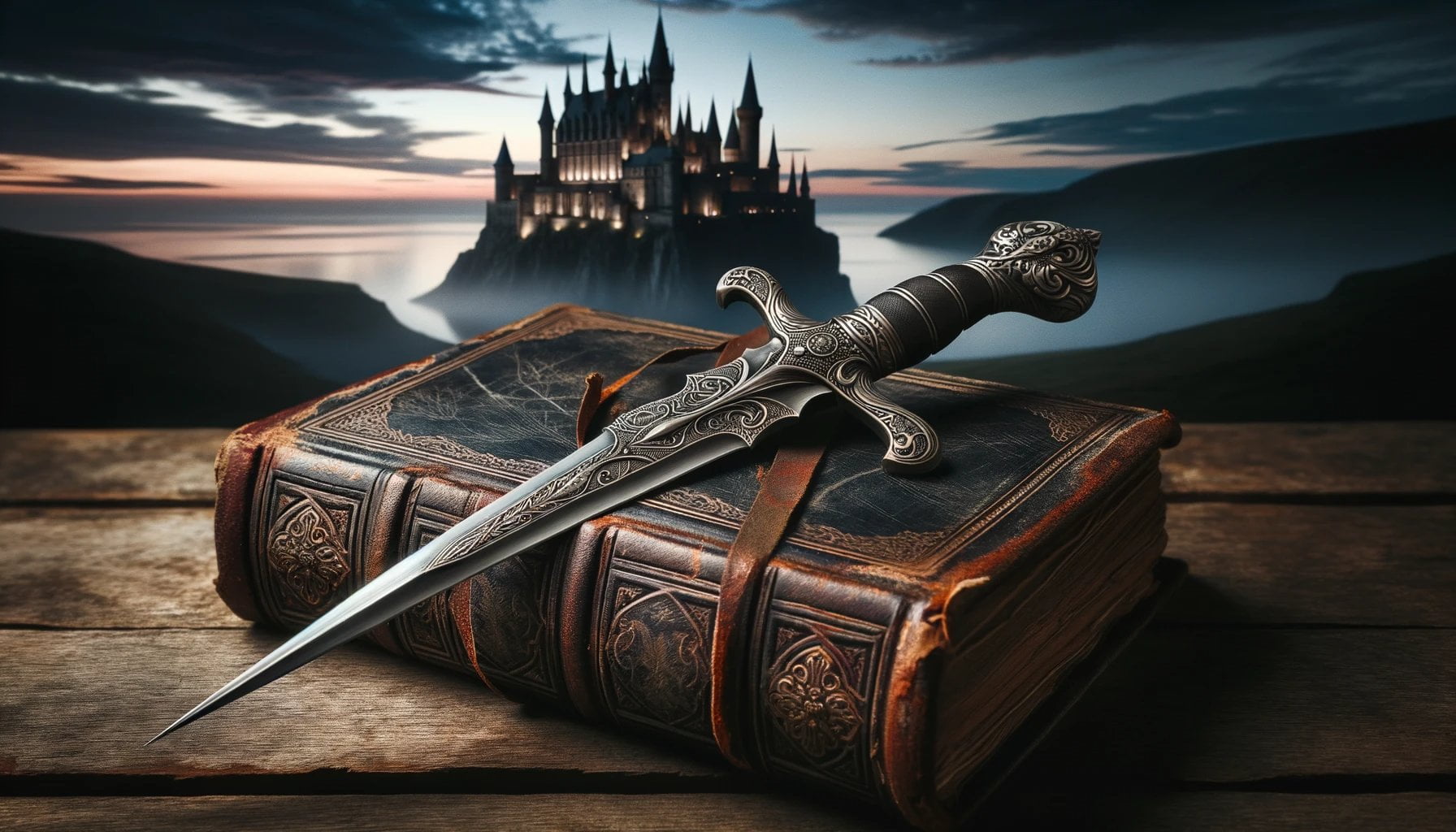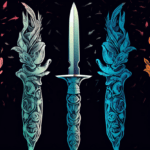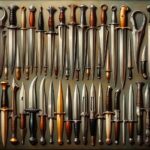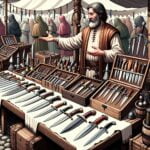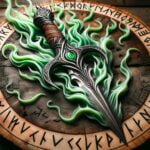What dagger did knights use? In the enthralling realm of medieval combat, where honor and steel clashed in epic battles, these fearsome warriors relied not only on their mighty swords and suits of armor, but also on a weapon that brought tact and precision to their arsenal: the medieval knightly dagger. In the shadows of history, its true significance remains shrouded in mystery, waiting to be unveiled. Step into the world of chivalry and discover the weapon of choice that accompanied knights on their noble quests!
What Dagger Did Knights Use?
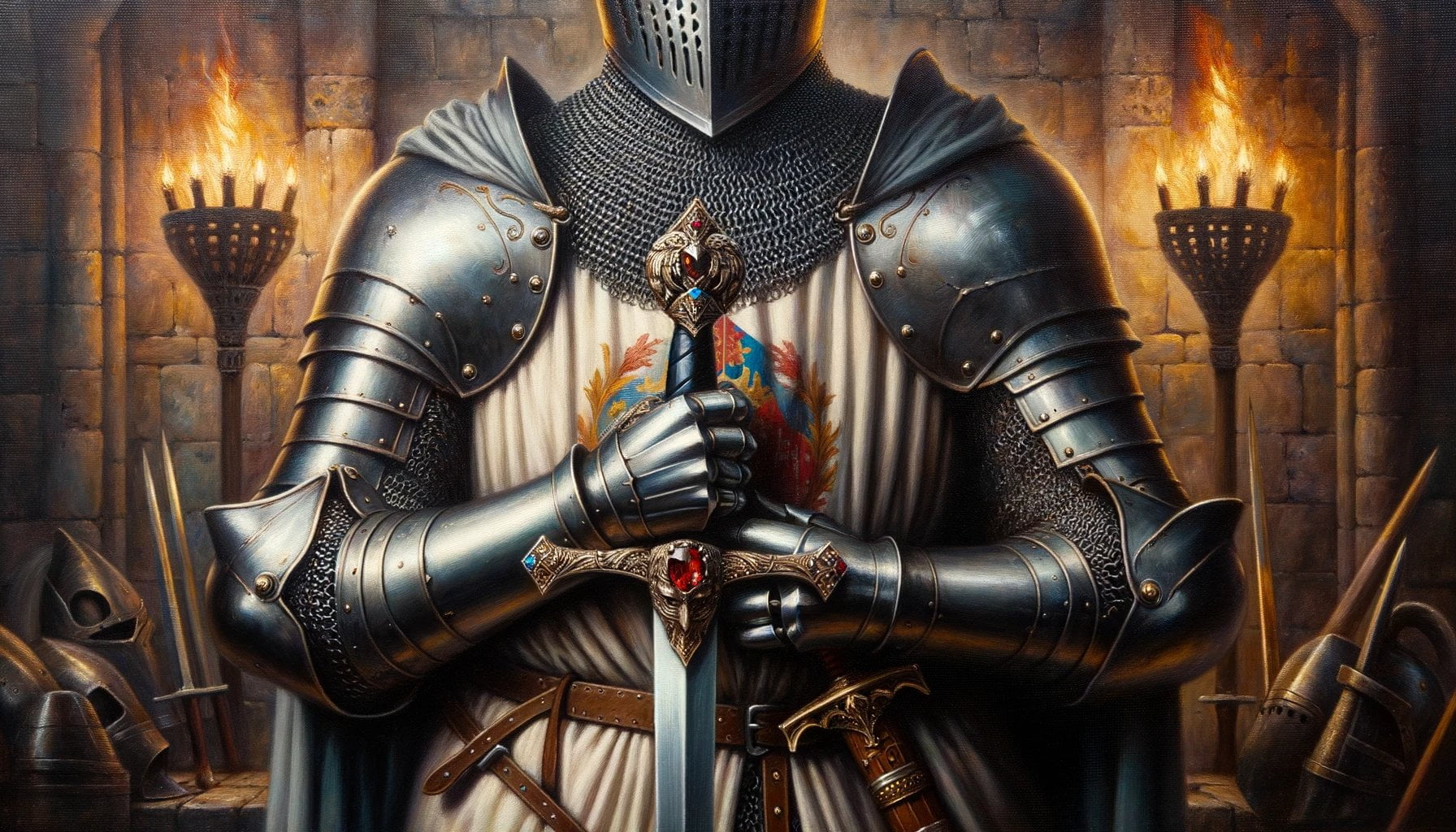
During the Middle Ages, knights were known for their prowess in combat and their unyielding devotion to honor and chivalry. But what kind of daggers did these warriors rely on? Let’s step back in time and explore the fascinating world of medieval knightly daggers.
Understanding the Rondel Dagger
One of the primary daggers favored by knights was the rondel dagger, also known as the roundel dagger. This stiff-bladed weapon was widely used in Europe during the late Middle Ages, not just by knights, but also by merchants and other individuals. Its reliable design and practicality made it a popular choice among those seeking self-defense or a versatile tool.
The Role of Daggers in Knightly Combat
Daggers served as a crucial secondary weapon for knights, especially in ground fighting scenarios. In close combat situations, knights would employ their daggers either as backup weapons or as finishing tools to dispatch wounded opponents. The dagger’s effectiveness stemmed from its compact size, allowing knights to maneuver swiftly and target vulnerable spots in the enemy’s armor, such as the armpit or groin.
Versatility and Construction
The rondel dagger boasted a stiff blade, which made it particularly useful in grappling and close combat situations. It could be worn at the waist as a utility tool, or knights could take it into battle or a jousting tournament as a sidearm. The design and construction of rondel daggers could vary, but most featured a double-edged blade for maximum efficiency and flexibility.
When Use of Daggers Was Necessary
It’s important to note that daggers were considered weapons of last resort. Knights turned to daggers when other weapons were lost, or when they found themselves in extremely close combat. This highlights the vital role these compact weapons played in the knightly arsenal.
Appreciating the Significance
To truly understand the importance of the dagger to knights, we must delve into their world. Imagine a knight clad in heavy armor, wielding a sword or lance as their primary weapon. Yet, in the heat of battle, the ability to transition seamlessly to a dagger could be the difference between life and death. The dagger symbolized the knight’s resourcefulness and adaptability, traits that were highly admired during the Middle Ages.
In conclusion, the rondel dagger stands out among the array of weapons used by knights. Its sturdiness, versatility, and importance in close combat scenarios make it an iconic representation of knightly weaponry. By unraveling the secrets of the past, we gain a deeper understanding of the world in which knights thrived, where these exceptional daggers played an integral role in their valorous quests. So, next time you ponder the weapons of knights, remember the rondel dagger and the incredible tales it holds.
Ancient daggers were the weapons of choice for warriors in battles long ago. If you’re fascinated by the history and craftsmanship of these ancient weapons, explore our collection of ancient daggers at Ancient Daggers. Discover the fascinating stories behind each dagger and own a piece of history.
Design Features and Characteristics of Knightly Daggers
In the realm of medieval weaponry, the knightly dagger holds a distinguished place as a formidable and versatile weapon. Let us delve into the intricate design features and characteristics that define these revered daggers.
Types of Knightly Daggers
Throughout the centuries, various types of knightly daggers emerged, each with its own unique design and purpose. Some notable examples include the poignard, parrying dagger, Scottish dirk, seax, and stiletto. These daggers catered to specific combat situations, reflecting the diverse needs of knights on and off the battlefield.
The Evolution of Knightly Daggers
The origins of the knightly dagger can be traced back to the 12th century when it closely resembled miniature swords of the period. However, in the 14th century, it evolved into the larger baselard knife, showcasing the ingenuity of medieval craftsmen. During this time, the rondel dagger also emerged as a prominent choice among knights. Its long and slim blade with a tapering needle point made it a formidable weapon for close combat.
Design Features
Knightly daggers were typically crafted with robust steel blades, ensuring both strength and durability. Crossguards and pommels, reminiscent of their larger counterparts, swords, adorned these daggers. These features not only enhanced grip and maneuverability but also added a touch of elegance to the weapon.
Versatile Functionality
Knightly daggers were not solely limited to fierce skirmishes on the battlefield. They served as excellent backup weapons for knights, particularly in ground combat. Their compact size allowed for swift maneuverability, enabling knights to strike at vulnerable spots in the enemy’s armor. Additionally, these daggers found relevance in everyday activities such as hunting, self-defense, and performing various tasks like cutting food or leather.
Symbolism and Significance
The knightly dagger, in all its variations, carried deep symbolic value throughout history. It represented a knight’s resourcefulness and adaptability, showcasing their ability to seamlessly transition from one weapon to another. The dagger’s presence played an integral role in knightly quests, epitomizing their valor and chivalry.
Conclusion
Through this exploration of the design features and characteristics of knightly daggers, we uncover a rich tapestry of their historical prominence. These diverse and versatile weapons not only aided knights in combat but also showcased their resourcefulness and skill. As we study and appreciate the intricacies of these distinguished daggers, we unveil a deeper understanding of the valor and chivalry that defined the knightly era.
Historical Context: Knights and their Daggers
Throughout the Middle Ages, knights relied on a variety of weapons to secure victory on the battlefield. While the longsword and lance often steal the spotlight, a closer look reveals the remarkable significance of the humble dagger in knightly combat.
The Rise of the Rondel Dagger
In the 14th century, Europe witnessed the emergence of a stiff-bladed dagger known as the rondel dagger. Crafted with a needle-like point, the rondel dagger was designed specifically for thrusting and stabbing attacks. Although knights primarily employed other weapons like long swords and lances, the rondel dagger quickly gained popularity as a sidearm of choice for both knights and civilians alike.
Versatility and Utility
Daggers served a vital role in a knight’s arsenal, acting as backup weapons in case primary weapons were lost or in close-quarters combat situations. Their compact size empowered knights to swiftly maneuver and target vulnerable spots in the enemy’s armor. The rondel dagger’s versatile design allowed knights to wear it at their waist as a utility tool, ensuring it was not only suitable for battle but also useful for everyday tasks such as cutting food or leather.
Materials and Evolution
Medieval daggers were crafted using various materials, with the choice depending on the time period and location. Steel blades were commonly used due to their durability, and many daggers boasted elaborate designs with crossguards and pommels, showcasing the craftsmanship and artistry of the time.
Over the centuries, the rondel dagger evolved alongside other types of knightly daggers, such as the poignard, parrying dagger, Scottish dirk, seax, and stiletto. In the 14th century, the baselard knife and rondel dagger became particularly prominent, representing the peak of knightly dagger evolution.
Symbolism and Significance
Knightly daggers held deep symbolic value, symbolizing a knight’s resourcefulness and adaptability. They were weapons of last resort, capable of turning the tide in a challenging battle or dire situation. The ability to seamlessly transition to a dagger could mean the difference between life and death for a knight, highlighting the pivotal role these weapons played in the knightly era.
Appreciating the design features and characteristics of knightly daggers not only offers insights into their historical prominence but also allows us to delve into the valor and chivalry of the knights themselves. These weapons embodied the very essence of their era, reflecting the courage, skill, and noble principles that defined the knightly code.
In conclusion, while longswords and lances may dominate the medieval weaponry narrative, daggers held their own place of importance in knightly combat. From the versatile rondel dagger to various other types of knightly daggers, these weapons epitomized resourcefulness and adaptability. Exploring the historical context of knights and their daggers provides a fascinating glimpse into an era where valor and chivalry were embodied by these exquisite weapons.
Keywords: Historical Context: Knights and their Daggers
Significance of Daggers in Medieval Warfare
Daggers played a crucial role in the realm of medieval warfare, serving as essential close-combat weapons for knights. These small yet formidable blades held immense significance on the battlefield, allowing warriors to penetrate armor gaps and strike at vulnerable areas. In this article, we will delve into the significance of daggers in medieval warfare, exploring their design features, historical context, and the strategic advantages they provided to knights.
Types of Daggers
Daggers used by knights during the Middle Ages came in various forms, each with its own unique characteristics. From the baselard knife to the poignard and parrying dagger, these weapons were designed for specific combat situations. Knights also relied on the Scottish dirk, seax, and stiletto daggers, each with distinctive features tailored to different needs.
Unlocking Armor’s Weak Spots
In medieval warfare, the wearing of full plate armor became increasingly common. While this provided excellent protection, it also presented knights with a challenge: how to penetrate these formidable defenses. Daggers emerged as a solution to this conundrum, with their long, tapered blades and sharp points. Designed for fast stabbing and thrusting motions, knights could target armor gaps such as the armpit, groin, or throat, aiming at the enemy’s weakest points.
The Versatility of Daggers
Beyond their function as close-combat weapons, daggers offered versatility to knights in various scenarios. Whether in battle, hunting, self-defense, or everyday tasks, these blades served as trusty sidearms. Their compact size enabled swift maneuverability, allowing knights to swiftly transition from their primary weapons to the dagger when the situation demanded it. This adaptability made a knight a formidable opponent, always ready to exploit any opening or weakness.
The Evolution of Knightly Daggers
As warfare tactics evolved, so too did the design of knightly daggers. In the 14th century, when knights frequently engaged in ground combat, rondel daggers emerged as prominent weapons. With their distinctive round handguards, these daggers were specifically crafted for grappling and creating openings in the opponent’s defenses. Knights carried them at their waists, making them not only utilitarian tools but also reliable sidearms for battle and tournaments.
Knights: Masters of Close Combat
Knights were trained in the art of close-quarters combat, and the dagger played a crucial role in their fighting techniques. Designed for short-range engagements, these weapons allowed knights to strike at vulnerable areas, exploiting any gap or weak spot in their opponent’s armor. The ability to seamlessly transition to a dagger could mean the difference between life and death, showcasing the resourcefulness and adaptability embraced by knights.
In Conclusion
Daggers held immense significance in medieval warfare, providing knights with a weapon that allowed them to overcome the challenges posed by heavy armor. Ranging from the baselard to the rondel, these blades were meticulously designed to penetrate armor gaps, offering versatility and adaptability in battle. By understanding the significance of daggers in medieval warfare, we gain deeper insights into the valor, chivalry, and strategic prowess of knights in their quest for victory on the battlefield.
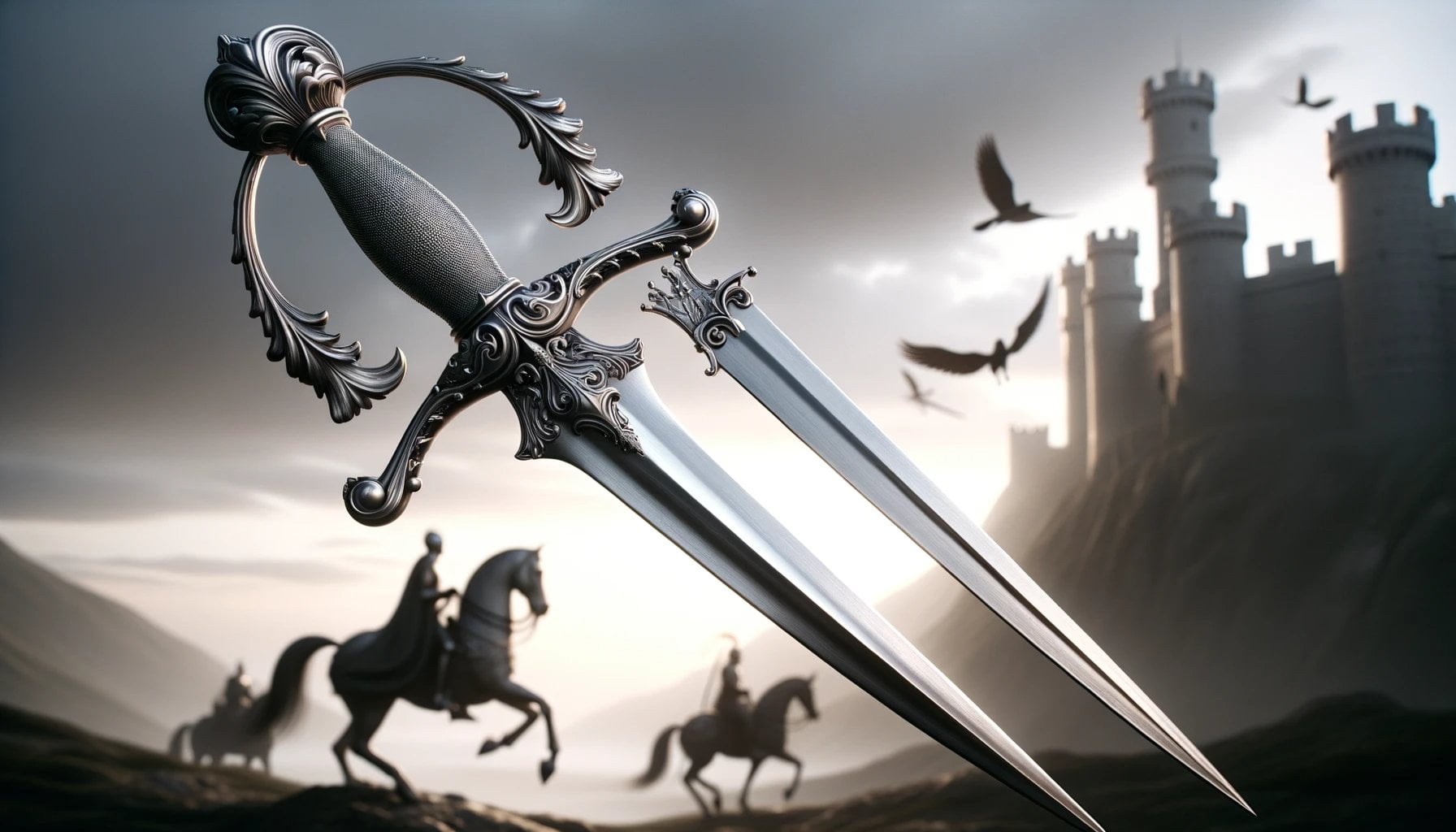
FAQ
Q1: What is a rondel dagger?
A1: A rondel dagger, also known as the roundel dagger, was a stiff-bladed dagger used in Europe during the late Middle Ages. It had a long and slim blade with a tapering needle point, designed for stabbing or thrusting.
Q2: Who used rondel daggers?
A2: Rondel daggers were used by a variety of people, including knights and merchants. Knights often used them as backup weapons in ground fighting, targeting weak spots in the armor of their opponents.
Q3: What were rondel daggers primarily used for in combat?
A3: Rondel daggers were typically used in close combat situations. Knights would try to get close to their opponent and thrust the dagger into weak spots in the armor, such as the armpit or groin. The stiff blade made them useful for grappling and close combat.
Q4: Were rondel daggers used for purposes other than combat?
A4: Yes, rondel daggers had dual-purpose functionality. They could be worn at the waist and used as a utility tool for everyday tasks like cutting food or leather. Additionally, they could be worn in battle or in jousting tournaments as a side arm.
Q5: How did the rondel dagger evolve over time?
A5: The rondel dagger later became known as the “knightly dagger” and evolved into the larger baselard knife in the 14th century. This transition occurred as knights began to fight more on foot rather than on horseback, and the daggers were adapted to fit their needs in close combat situations. The baselard knife had a similar design to the rondel dagger but was larger in size.
- Star Ring Trends: Etsy vs Amazon - March 28, 2025
- Boost Pollinator Habitats: Baby Blue Eyes Sustainable Farming Guide - March 28, 2025
- Protect Big Black Bears: Effective Conservation Strategies - March 28, 2025
